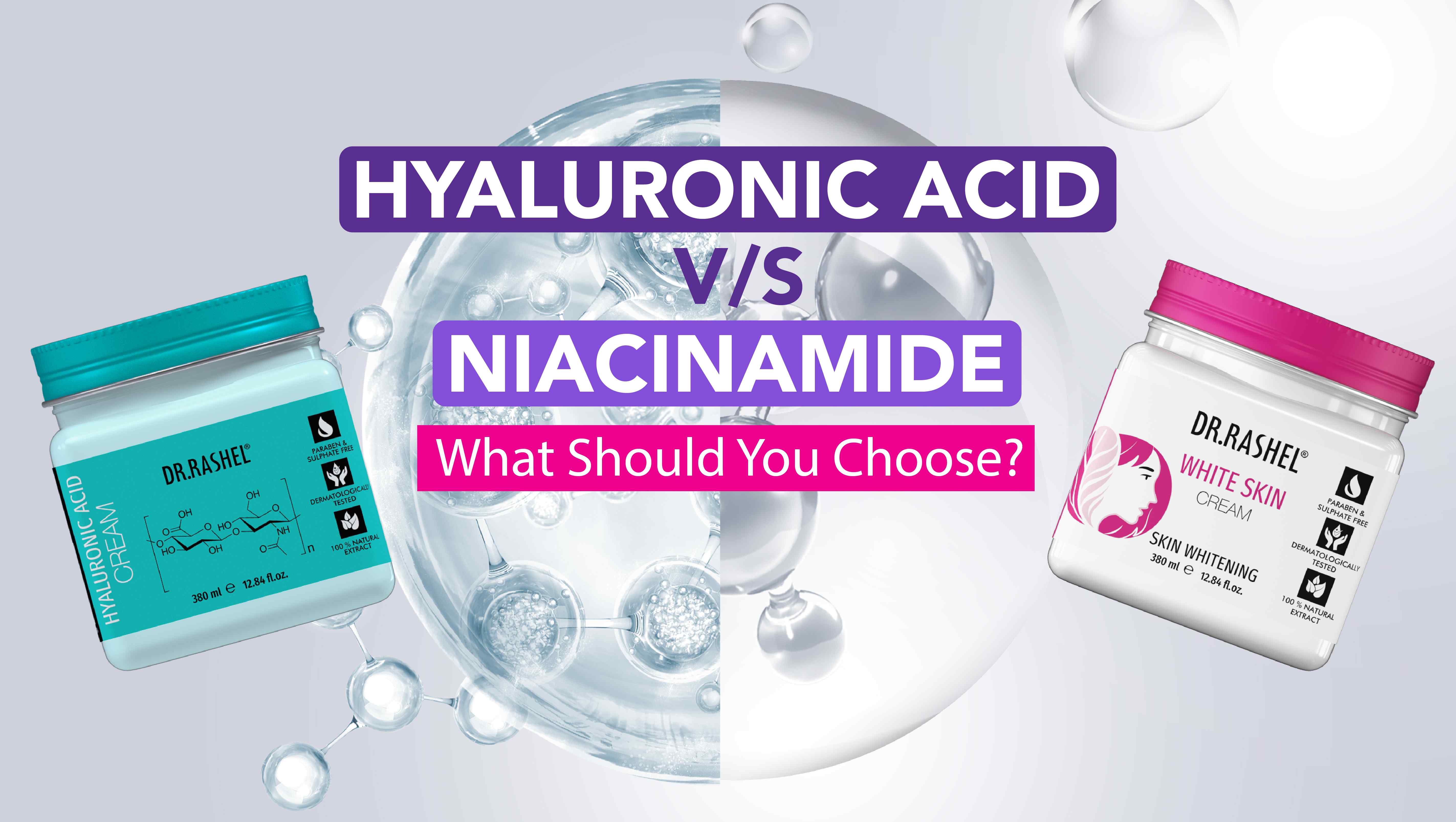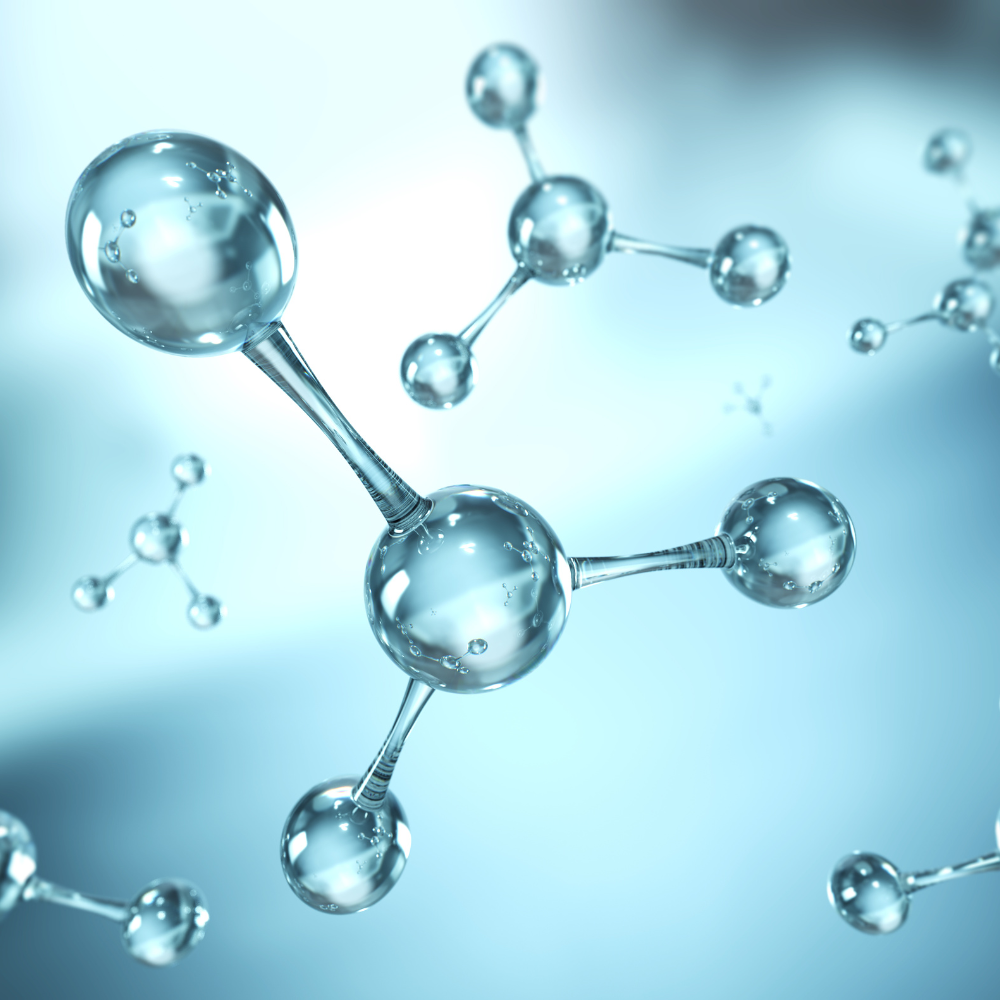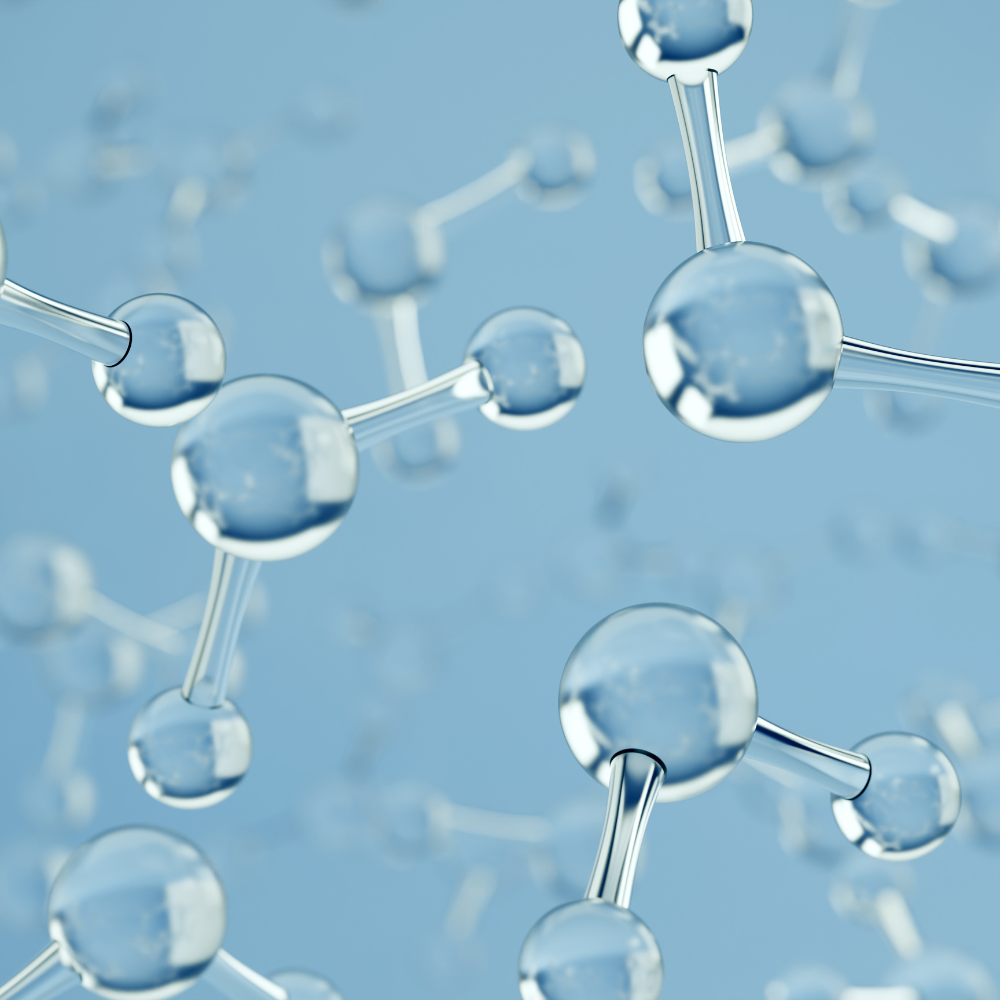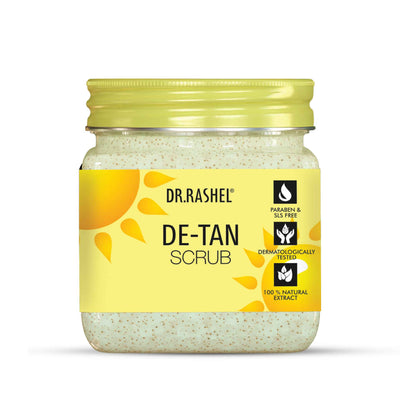
Table of Contents
- What is Hyaluronic Acid?
- What is Niacinamide?
- Can I use Niacinamide and Hyaluronic Acid together?
- Choosing Between Hyaluronic Acid and Niacinamide for Different Skin Types
- Concluding Points
- FAQ’s
Who doesn't want flawless and healthy skin?
In this regard, two ingredients stand out as the most effective and versatile. Niacinamide and Hyaluronic Acid are the two heroes of skincare offering insane benefits for various skin concerns. So when building a skincare routine, you need to understand what each offers to the skin and if your skin needs those benefits.
To help you pick your side on the hyaluronic acid vs niacinamide topic, we've put together the most relevant information on hyaluronic acid and niacinamide.

What is Hyaluronic Acid?
The ultimate hydrating ingredient for your skin - that's what Hyaluronic Acid is! Naturally found in our joints and connective tissues, it has a transparent and sticky texture. It keeps the moisture maintained and skin plumper than ever. Hyaluronic Acid acts as a humectant that retains moisture in the skin and makes it appear youthful. It draws moisture from the environment and from the deeper layers of skin to the epidermis (outer layer of skin) to keep it supple. Hyaluronic Acid is applied to the skin topically to reduce dehydration and signs of aging.

What is Niacinamide?
A skincare powerhouse, Niacinamide is a form of Vitamin B3 and an excellent option to smooth out wrinkles, create an even skin complexion and improve the skin’s texture. Niacinamide works harder than Hyaluronic Acid to provide your skin with benefits. It works magically to minimize enlarged pores, make the skin firm and get rid of dullness. It is also helpful in strengthening the skin's barrier and reducing the impact of environmental damage.
Can I use niacinamide and hyaluronic acid together?
Though better on their own, hyaluronic acid and niacinamide together are a dynamic duo!
Niacinamide and hyaluronic acid are both efficient at keeping the skin hydrated and young-looking. Using both together can work wonders on the skin to maintain its heath, moisture levels and youthfulness. Hyaluronic Acid pulls water into the skin and maintains it for long periods of time and Niacinamide benefits the skin by strengthening the moisture barrier and preventing water loss.
So, yes hyaluronic acid and niacinamide can be used together to offer your skin powerful moisturizing and anti-aging effects.
Choosing between hyaluronic acid and niacinamide for different skin types

Dry Skin
Without doubt, dry skin needs Hyaluronic Acid! It will replenish moisture in the skin and keep the moisture barrier intact. It will help the skin soak in water like a sponge and keep it feeling soft, plump and nourished.
Oily/Acne Skin
Niacinamide is a literal superhero for oily skin! It helps with regulating sebum production in the skin which in turn prevents the clogging of pores and inflammation. It also treats post-acne scars and redness leading to improved and clear skin.
Combination Skin
Hyaluronic Acid is the peak option for combination skin! As both dry and oily skin need adequate hydration, Hyaluronic Acid will keep the skin quenched without causing excess oiliness on the skin.
Sensitive Skin
Hyaluronic acid is the one for sensitive skin due to its highly reactive nature. It will gently hydrate the skin without causing any irritation and plus make the skin barrier stronger. You can even use a lower concentration of Niacinamide to soothe redness, inflammation and make skin more resilient.
Mature Skin
Water-loss being the top reason for skin aging, the perfect solution is to incorporate hyaluronic acid and niacinamide together! HA will provide for the lack of moisture in mature skin and Niacinamide will support collagen production to give the skin firmness and anti-aging effect.
Final Note
Both hyaluronic acid and niacinamide are effective and potent ingredients in skincare. Hyaluronic Acid provides hydration and Niacinamide helps cure acne, reduce pigmentation and boost collagen in the skin. Using them individually or together can help tackle your skin issues from within. And there is obviously space for both in your skincare routine, if you don't want to pick one!
FAQ’s: Hyaluronic Acid vs Niacinamide
Can niacinamide be used with hyaluronic acid?
Yes, niacinamide and hyaluronic acid can be used together for hydrated and improved skin appearance. Apply HA first and then niacinamide to lock in moisture.
Does hyaluronic acid lighten skin?
No, Hyaluronic Acid mainly works to hydrate the skin and make it appear plump and healthy. You can pair niacinamide with HA for brightening effects.
Which is better hyaluronic acid or niacinamide?
Between Hyaluronic Acid and Niacinamide, which one is better depends on your skin's needs. Hyaluronic Acid is ideal for hydrating dry skin and Niacinamide is great for improving skin texture and tone. You can even use both together for optimal results.
Is it better to use hyaluronic acid or niacinamide at night?
Both Hyaluronic Acid and Niacinamide are safe and effective to use at night. HA will assist in repairing the skin overnight and niacinamide will help target acne, dullness and uneven skin.
Is hyaluronic acid or niacinamide better for dark spots?
To treat dark spots, Niacinamide proves to be more effective. It will help fade hyperpigmentation by slowing down the transfer of melanin in skin cells.
Should I use hyaluronic acid or niacinamide first?
You should apply Hyaluronic Acid first to draw in moisture and prep the skin for better absorption. Then follow it up with Niacinamide to target specific skin concerns.
Should I use niacinamide or hyaluronic acid in the morning?
You can use Hyaluronic Acid and Niacinamide both in your morning skincare routine. HA will help your sin stay fresh and plump throughout the day and Niacinamide will help with oil control and protection against external stressors.
Which is better for oily skin: niacinamide or hyaluronic acid?
Niacinamide is better for oily skin as it regulates sebum, minimizes pores, and prevents excess shine. Hyaluronic acid can still be used to hydrate without adding oil.
Which is better for dry skin: hyaluronic acid or niacinamide?
Hyaluronic acid is ideal for dry skin since it attracts and retains moisture. Pairing it with niacinamide works even better, as niacinamide strengthens the barrier to keep hydration locked in.
Can niacinamide reduce redness better than hyaluronic acid?
Yes, niacinamide is known for calming redness and irritation, especially in acne-prone or sensitive skin. Hyaluronic acid hydrates but doesn’t directly target redness.
Which is better for anti-aging: niacinamide or hyaluronic acid?
Both help, but in different ways. Hyaluronic acid plumps fine lines by hydrating, while niacinamide improves elasticity, smooths wrinkles, and boosts long-term skin resilience.
Should I use hyaluronic acid in the morning or night?
You can use hyaluronic acid both morning and night. In the morning, it keeps skin fresh and hydrated; at night, it supports repair and recovery.
Should I use niacinamide in the morning or night?
Niacinamide is safe and effective for both. In the morning, it helps with oil control and environmental protection; at night, it supports repair and brightening.
Should I apply moisturizer after hyaluronic acid or niacinamide?
Yes, always. Moisturizer seals in both ingredients, ensuring hydration from hyaluronic acid and the skin-balancing benefits of niacinamide last longer.
Do I need sunscreen after using hyaluronic acid or niacinamide?
Yes, sunscreen is essential after any serum. While neither makes skin more sun-sensitive, protecting your skin barrier ensures the ingredients work effectively.
Is niacinamide safer for sensitive skin than hyaluronic acid?
Both are safe, but niacinamide offers extra soothing and redness-reducing benefits, making it especially suitable for sensitive or reactive skin.
Written by Madiha Patel







